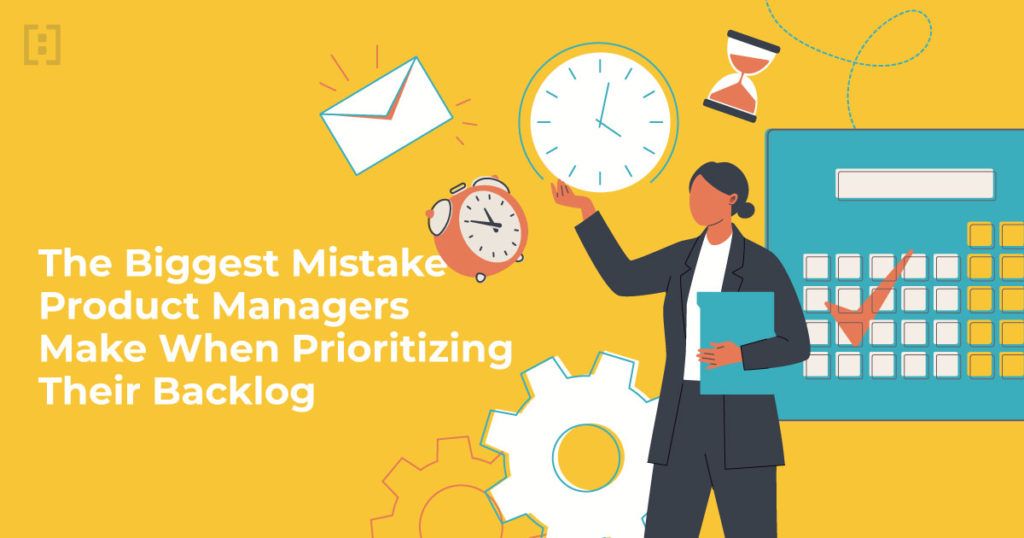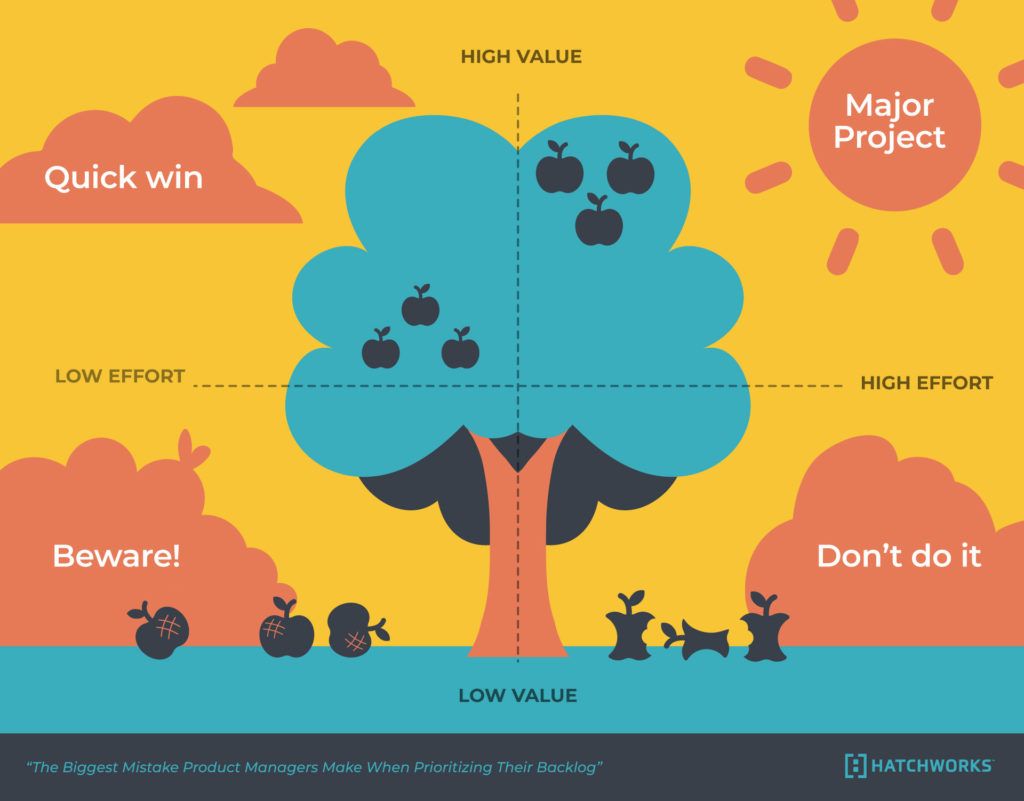Caution to all you product manager folks out there:
BEWARE OF LOW-HANGING FRUIT

When it comes to building a product, everyone knows you must make trade-offs, but prioritization is hard.
There are competing priorities from:
- Customers
- Stakeholders
- CEO
- Developers
- Designers
- Other product managers
And the list goes on…
Product managers must ensure they prioritize the right thing and deliver value to both their customer and the business all while making sure they don’t end up with a product that looks like Frankenstein’s monster.
PS. “feature-rich” isn’t always a good thing. Too much complexity in your product can confuse your ideal customer.
So how do you go about prioritizing the RIGHT THING to build next?
Don’t worry – we have a framework that will make you become a prioritization rockstar and channel your inner Steve Jobs.
Funny enough it deals with apples (no pun intended).
Our Prioritization Framework

This framework will help you:
- Visualize your competing priorities
- Facilitate discussion with stakeholders on what to prioritize
- Avoid falling into the low-hanging fruit trap
Here is how it works:
Simply put Value on the y-axis and Effort on the x-axis.
From there, place your competing features ideas on the matrix based on their effort and value.
(PS. if you want to get fancy, you can color code your features by whether they provide value for your customer or your business. Also, whether they are a net new idea, an existing feature enhancement, or a technology enabler)
This will help you visualize where your competing feature ideas and requests stack up:
Quick Wins (High Value and Low Effort):
Do these first. No matter what.
This is a win-win at its finest. Easy for you AND valuable for your customer (can life get any better??).
Don’t Do (High Effort and Low Value):
As the Whos say to the Grinch, “I wouldn’t touch you with a 39-and-a-half foot pole”
Get these ideas out of your mind and, more importantly, off your product backlog.
It doesn’t matter if your CEO is requesting it. Show them this framework and say, “NO.”
Major Projects (High Value and High Effort):
This is where things get a bit more tricky…
Most folks get overwhelmed by these and shelf them for a sunny day.
The problem is that, many times, this is where those strategic differentiators live. There is no better way to build a moat around your product than to build the hard things that your customers find the most value in.
If it was easy, everyone would do it.
Think hard about these and don’t discount them just because they are difficult. Focus on those features that align with your strategy and truly help you stand out in the mind of your ideal customer.
Trust us. It is worth it.
Beware (Low Effort & Low Value):
These are the fruits that will lull you into complacency and, as a result, leave you with a product that looks more like Frankenstein’s monster and less like something your ideal customer wants to buy.
While these features are easy to deliver and easy to justify, they are also an easy way to fall into the low-hanging fruit trap.
Don’t be that product:
- The product that tries to serve everyone
- The product that has so many features, no one has any idea what it actually does
- The product that is so confusing, that people give up after a day of trying to use it
Be selective.
Be smart.
And don’t be afraid to take on the major project.
Your customers will thank you for it with repeat business and extended contracts, and your business will thank you for it in the bottom line results you are driving.
Essential AI Skills for Your Team
AI Training for Teams gives your team foundational AI knowledge, preparing you to effectively integrate AI into your business.




